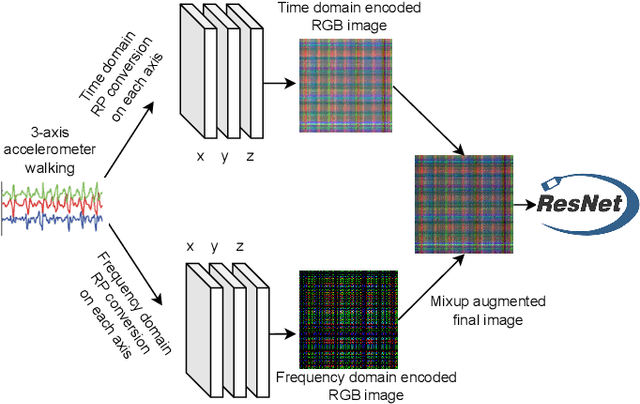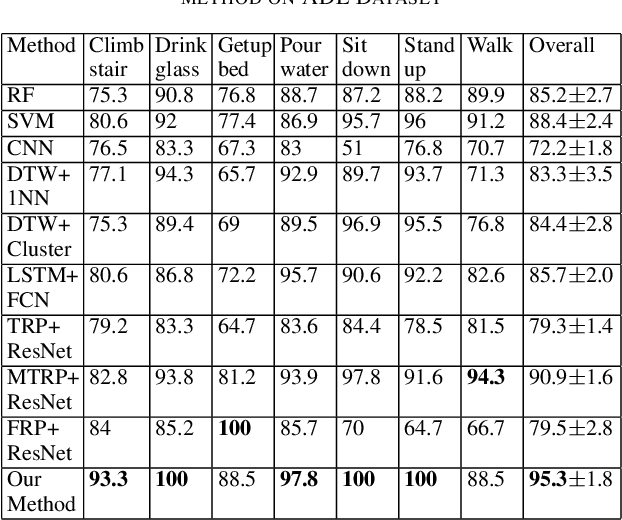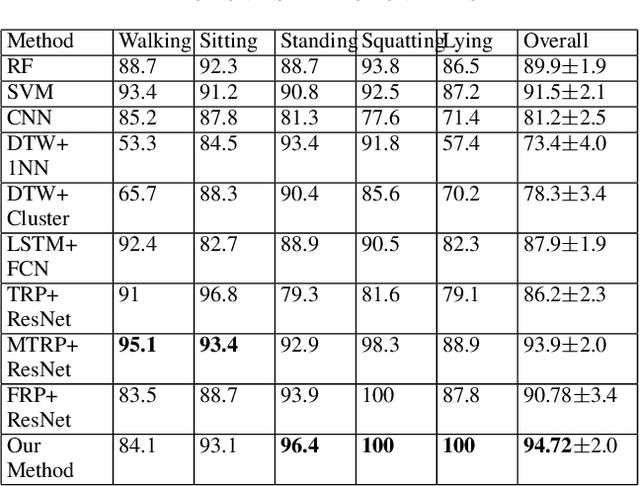Yidong Zhu
Enhancing Wearable based Real-Time Glucose Monitoring via Phasic Image Representation Learning based Deep Learning
Jun 12, 2024Abstract:In the U.S., over a third of adults are pre-diabetic, with 80\% unaware of their status. This underlines the need for better glucose monitoring to prevent type 2 diabetes and related heart diseases. Existing wearable glucose monitors are limited by the lack of models trained on small datasets, as collecting extensive glucose data is often costly and impractical. Our study introduces a novel machine learning method using modified recurrence plots in the frequency domain to improve glucose level prediction accuracy from wearable device data, even with limited datasets. This technique combines advanced signal processing with machine learning to extract more meaningful features. We tested our method against existing models using historical data, showing that our approach surpasses the current 87\% accuracy benchmark in predicting real-time interstitial glucose levels.
Augmenting Deep Learning Adaptation for Wearable Sensor Data through Combined Temporal-Frequency Image Encoding
Jul 03, 2023


Abstract:Deep learning advancements have revolutionized scalable classification in many domains including computer vision. However, when it comes to wearable-based classification and domain adaptation, existing computer vision-based deep learning architectures and pretrained models trained on thousands of labeled images for months fall short. This is primarily because wearable sensor data necessitates sensor-specific preprocessing, architectural modification, and extensive data collection. To overcome these challenges, researchers have proposed encoding of wearable temporal sensor data in images using recurrent plots. In this paper, we present a novel modified-recurrent plot-based image representation that seamlessly integrates both temporal and frequency domain information. Our approach incorporates an efficient Fourier transform-based frequency domain angular difference estimation scheme in conjunction with the existing temporal recurrent plot image. Furthermore, we employ mixup image augmentation to enhance the representation. We evaluate the proposed method using accelerometer-based activity recognition data and a pretrained ResNet model, and demonstrate its superior performance compared to existing approaches.
 Add to Chrome
Add to Chrome Add to Firefox
Add to Firefox Add to Edge
Add to Edge